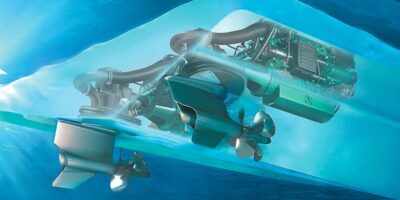Understanding Spider Cracking
Understanding Spider Cracking
Spider cracking is a phenomenon that affects many materials, especially surfaces exposed to stress over time. These cracks resemble a spider’s web, hence the name. They’re not just a cosmetic issue but can indicate deeper structural concerns. Understanding spider cracking can help in recognizing early signs of wear, assessing damage, and planning repairs more effectively.

Causes of Spider Cracking
Stress and fatigue in materials often lead to spider cracking. Repeated exposure to environmental conditions like heat, cold, and moisture can weaken materials, making them more susceptible to cracking. Chemical reactions, such as corrosion in metals or oxidation in plastics, also contribute. Long-term exposure to ultraviolet (UV) light degrades many synthetic materials, increasing the likelihood of cracks. Manufacturing defects or improper handling during installation can make materials more prone to spider cracking from the start.
Materials Commonly Affected
Various materials are susceptible to spider cracking. Asphalt and concrete are among the most common, given their widespread use in construction. Fiberglass, often used in marine and automotive applications, also experiences this issue. Plastics, including those used in consumer goods and industrial applications, are particularly vulnerable due to their susceptibility to environmental stressors. Paint and coatings can develop spider cracks, often as a first sign of underlying problems in the substrate.
Recognizing Spider Cracking
Spider cracks typically appear as a series of small, interconnected fractures on a surface. These might look like a web and can vary in size and depth. In asphalt and concrete, cracks may start small but can expand over time, leading to larger fissures. In fiberglass, cracks may expose underlying layers, revealing the composite material. For plastics, cracks often start at stress points such as joints or edges and spread outward. In paint, cracks can appear as fine lines that widen, eventually leading to peeling or flaking.
Effects on Structural Integrity
Spider cracking can significantly impact the structural integrity of materials. In asphalt, cracks allow water ingress, leading to freeze-thaw damage and further degradation. For concrete, cracks can reduce load-bearing capacity and lead to spalling. Fiberglass with spider cracks loses its protective properties, making it vulnerable to more severe damage. Plastic items become brittle and can break under stress. Coatings with spider cracks fail to protect underlying materials, accelerating deterioration.
Inspection Methods
Regular inspection is key to identifying spider cracking early. Visual inspection is the first step, looking for characteristic web-like patterns. For materials like concrete and asphalt, more detailed inspections might involve sounding techniques to detect underlying voids or delaminations. Dye penetrant inspections can reveal cracks in nonporous materials like metals and plastics. Ultrasonic testing is useful for detecting cracks in composite materials like fiberglass, providing a view of internal damage not visible on the surface. Thermal imaging can identify areas of stress concentration where cracks might develop.
Prevention and Maintenance
Preventing spider cracking involves both material selection and proper maintenance. Using materials designed for the specific environmental conditions they will face reduces the risk. Regular maintenance, such as sealing asphalt or applying protective coatings to surfaces, helps protect against environmental stressors. Proper installation techniques, ensuring materials are not stressed during the process, also play a crucial role. For existing structures, regular inspections and timely repairs prevent small cracks from becoming significant issues.
Repair Techniques
The method of repairing spider cracks depends on the material and extent of damage. For asphalt and concrete, small cracks can be sealed with appropriate fillers to prevent water ingress. Larger cracks might require cutting out and replacing affected sections. Fiberglass repairs often involve sanding down the cracked area and applying new layers of resin and fiberglass. Plastic components can sometimes be welded or bonded using special adhesives. For paints and coatings, removing the damaged layer and reapplying the coating restores the protective barrier.
Case Studies
Examining specific examples of spider cracking can provide insights into common issues and solutions. One notable case involved a parking lot with extensive spider cracking in its asphalt surface. Regular maintenance was neglected, allowing cracks to propagate and resulting in significant damage. A detailed inspection and phased repair approach, including sealing small cracks and replacing larger sections, restored the lot’s integrity. Another example is a fiberglass boat hull suffering from spider cracks. The owner used a DIY kit to sand, fill, and refinish the cracks, effectively extending the hull’s life.
Innovations in Materials
Advances in materials science are helping to reduce the incidence of spider cracking. New composite materials with improved stress resistance are being developed for construction and manufacturing. Self-healing materials that can repair minor cracks through chemical reactions or material flow are becoming a reality. UV-resistant coatings and additives extend the life of outdoor materials, reducing the risk of cracking. Research into nanotechnology is also providing solutions, such as reinforcing materials at the molecular level to enhance durability.
Industry Standards and Guidelines
Various industries have developed standards and guidelines to address spider cracking. The construction industry, for example, follows guidelines for material selection, installation practices, and maintenance schedules to prevent cracking. Organizations like ASTM International provide standardized testing methods for detecting cracks in materials. The automotive and marine industries have specific protocols for inspecting and repairing fiberglass components. Adhering to these standards helps ensure that structures and products maintain their integrity over time.
Economic Impact
Spider cracking can have a significant economic impact. For infrastructure, such as roads and bridges, repairs can be costly and disruptive. In manufacturing, defective products can lead to recalls and warranty claims. The cost of preventive measures, while an upfront expense, is often far less than the cost of extensive repairs or replacements. Regular maintenance and timely repairs can extend the life of materials, providing long-term economic benefits.
Environmental Considerations
Addressing spider cracking has environmental implications. Repairing and maintaining structures reduces the need for new materials, conserving resources. Proper disposal of materials removed during repairs is crucial to minimize environmental impact. Using environmentally friendly materials and coatings can mitigate the harmful effects of chemicals used in maintenance and repair processes. Implementing sustainable practices in construction and manufacturing supports the broader goal of environmental conservation.
Future Trends
Looking ahead, several trends are likely to influence how spider cracking is managed. Advances in inspection technology, such as drones and artificial intelligence, will enhance the ability to detect and assess cracks. The development of smarter materials, responsive to environmental conditions, offers promise for extending the life of structures and products. Greater emphasis on sustainability will drive innovations in materials and processes, further reducing the incidence and impact of spider cracking. The integration of IoT (Internet of Things) in infrastructure monitoring will provide real-time data on material conditions, enabling proactive maintenance and repairs.




Subscribe for Updates
Get the latest articles delivered to your inbox.
We respect your privacy. Unsubscribe anytime.